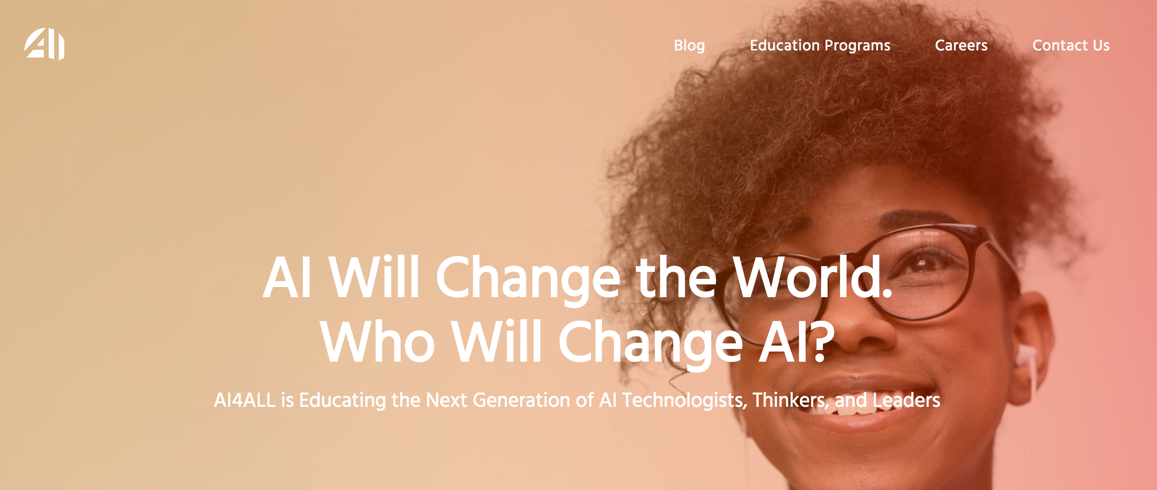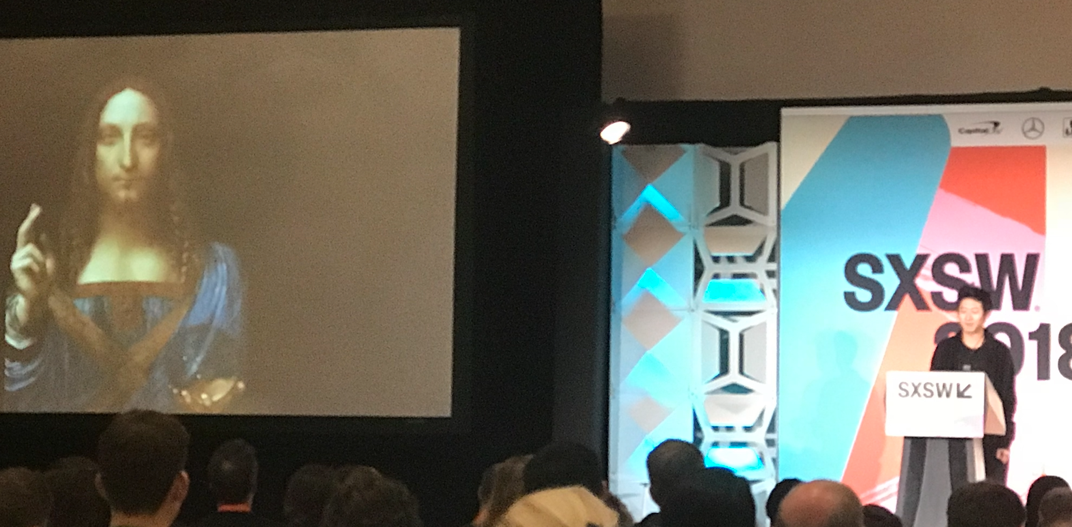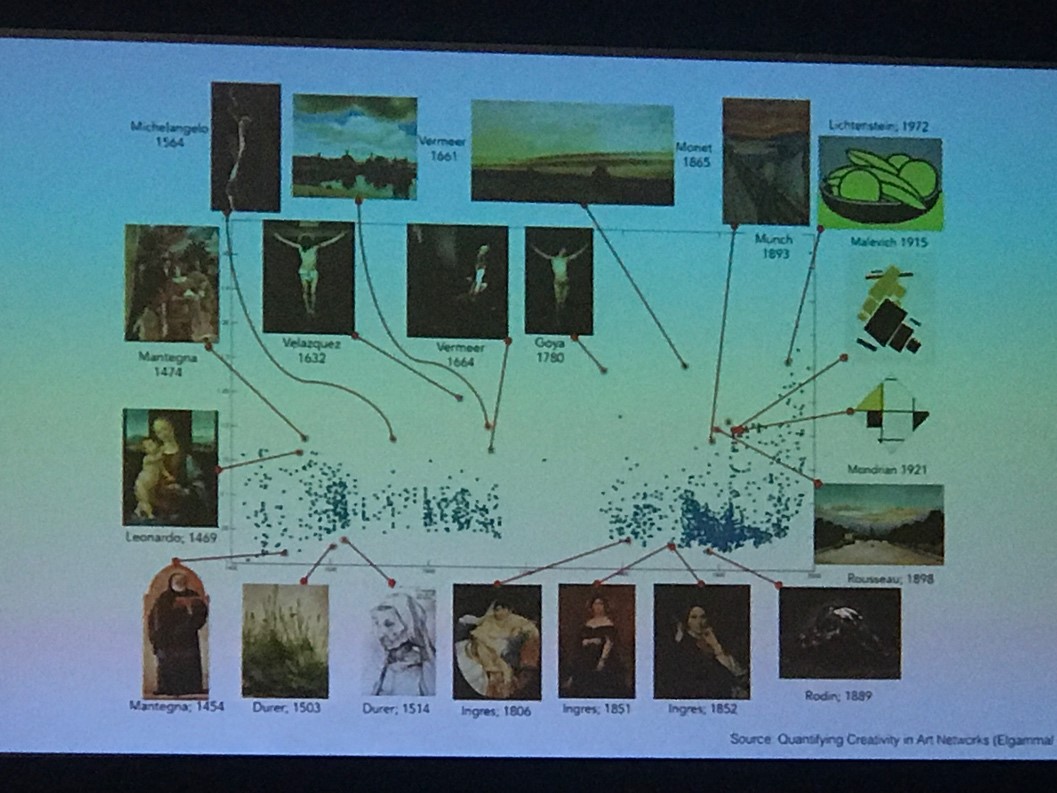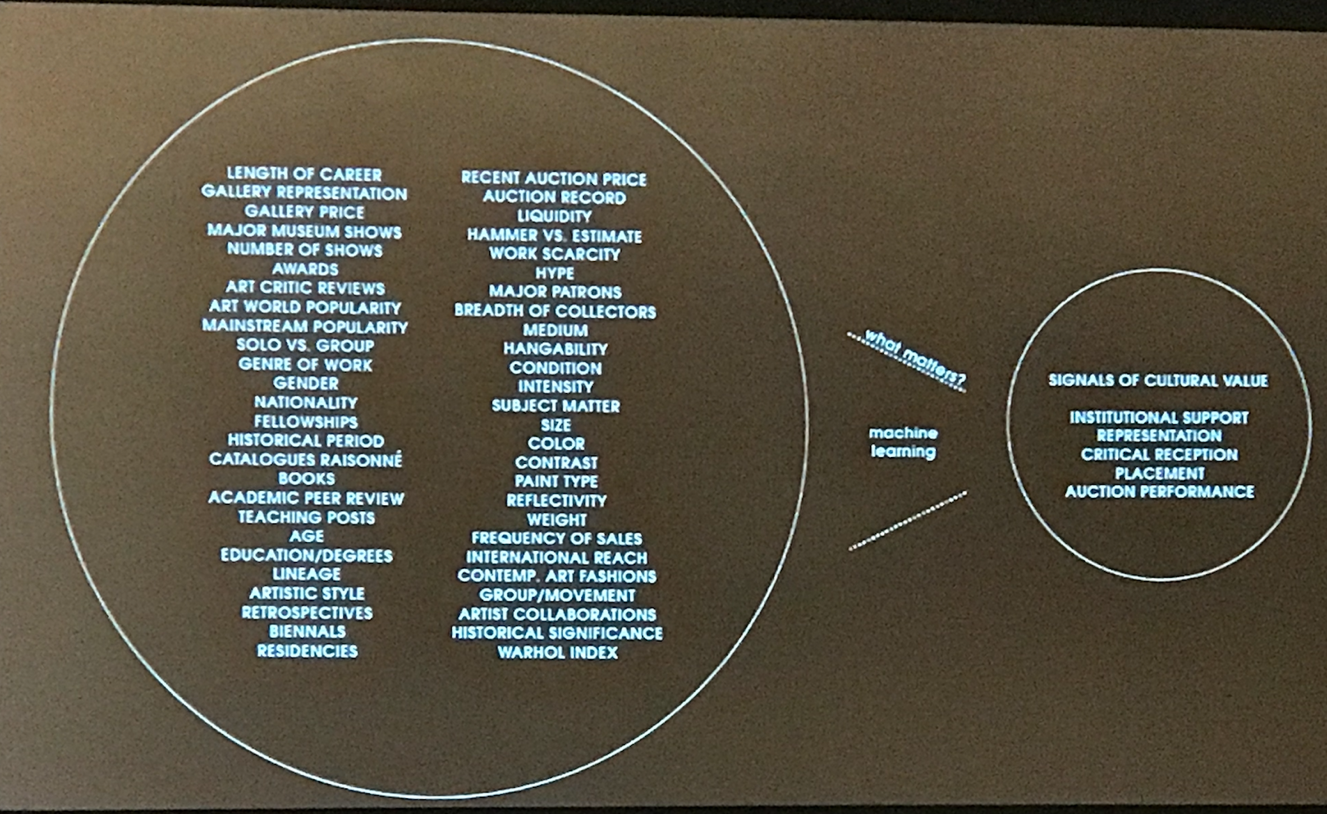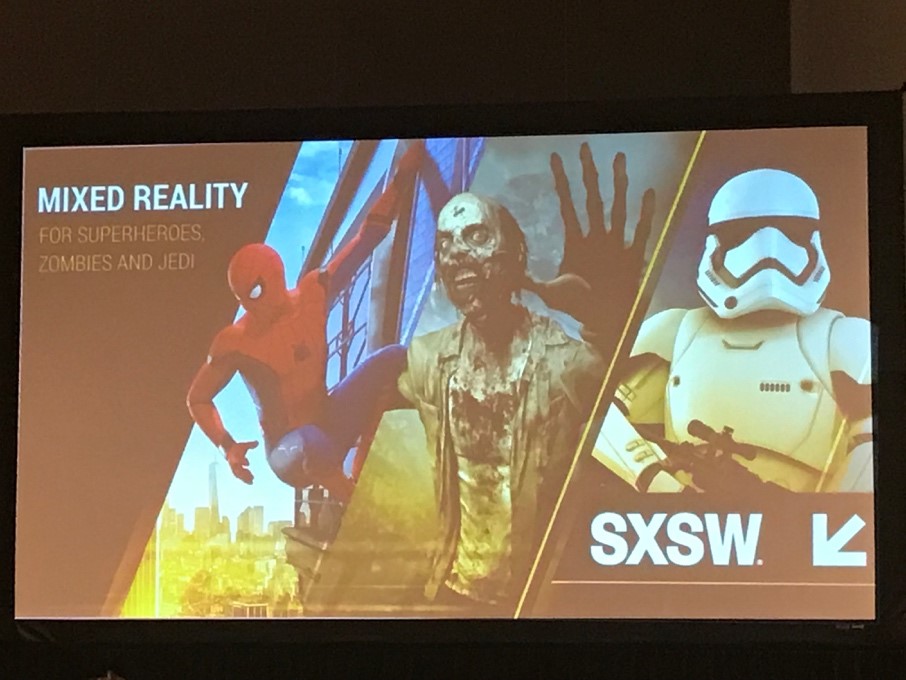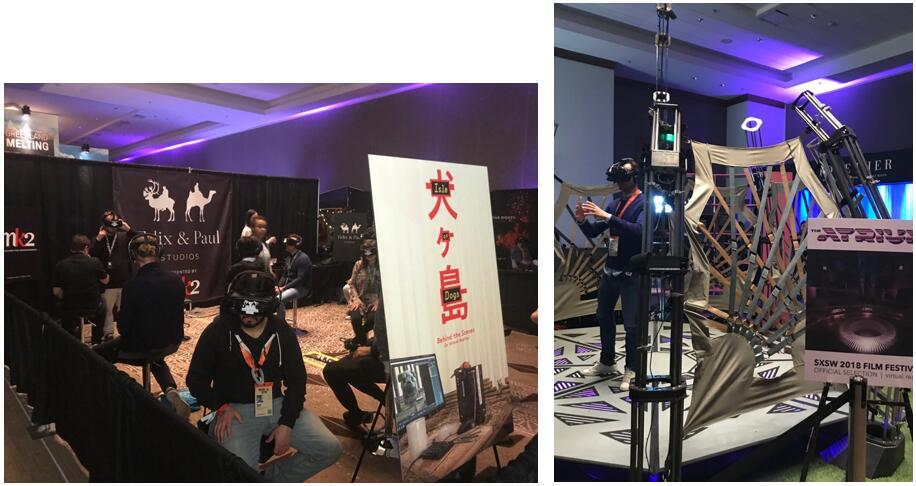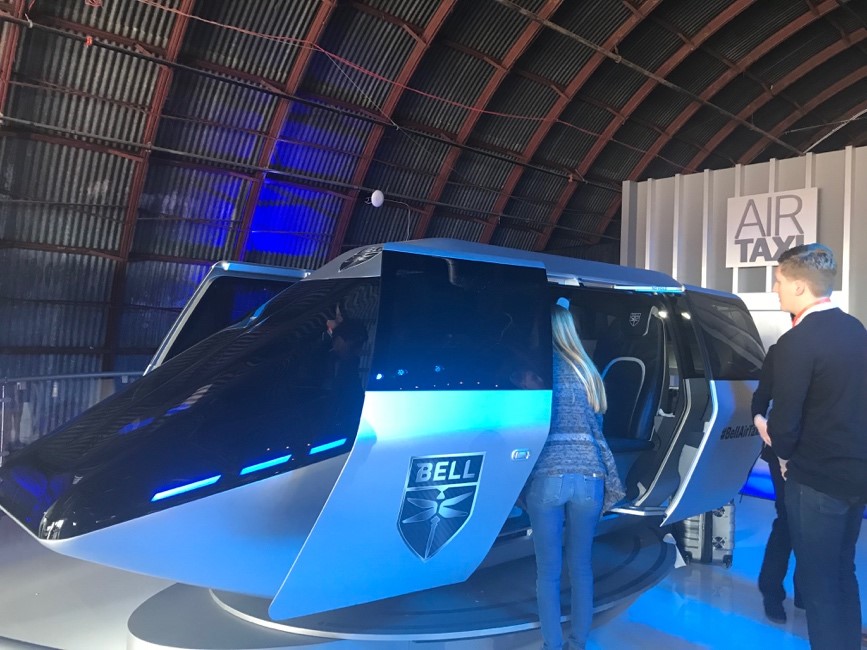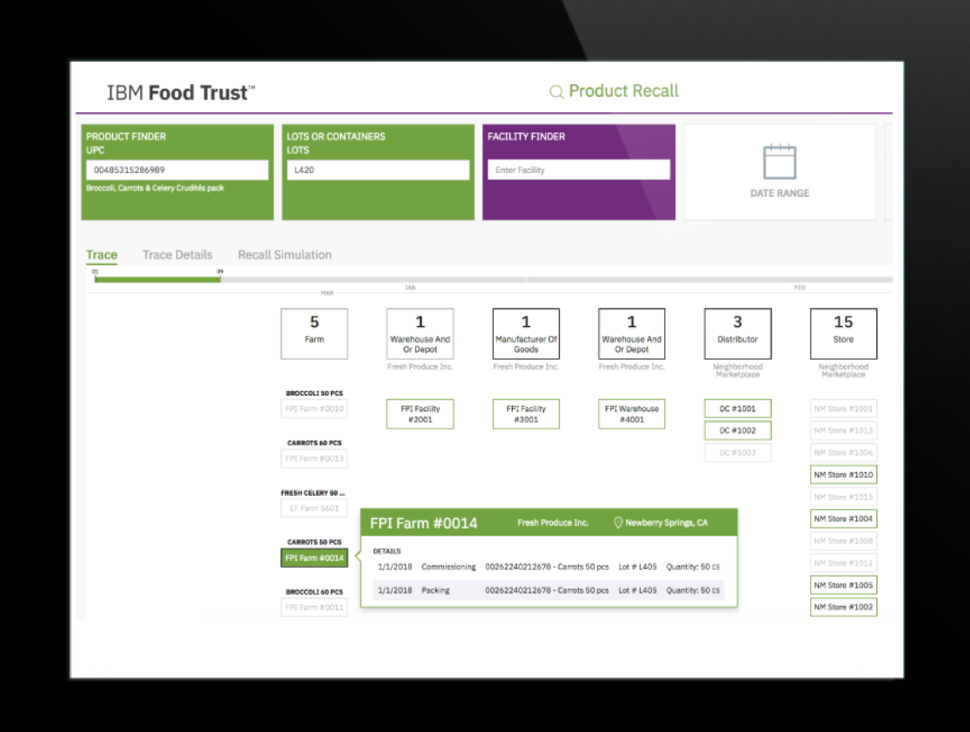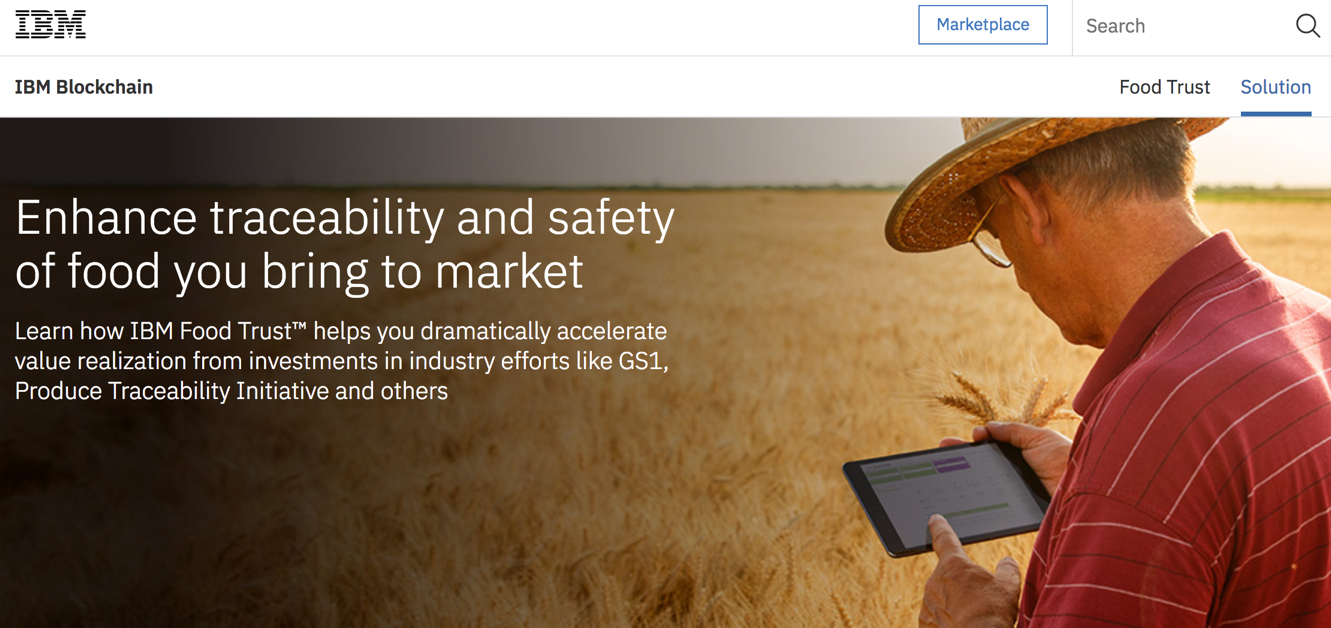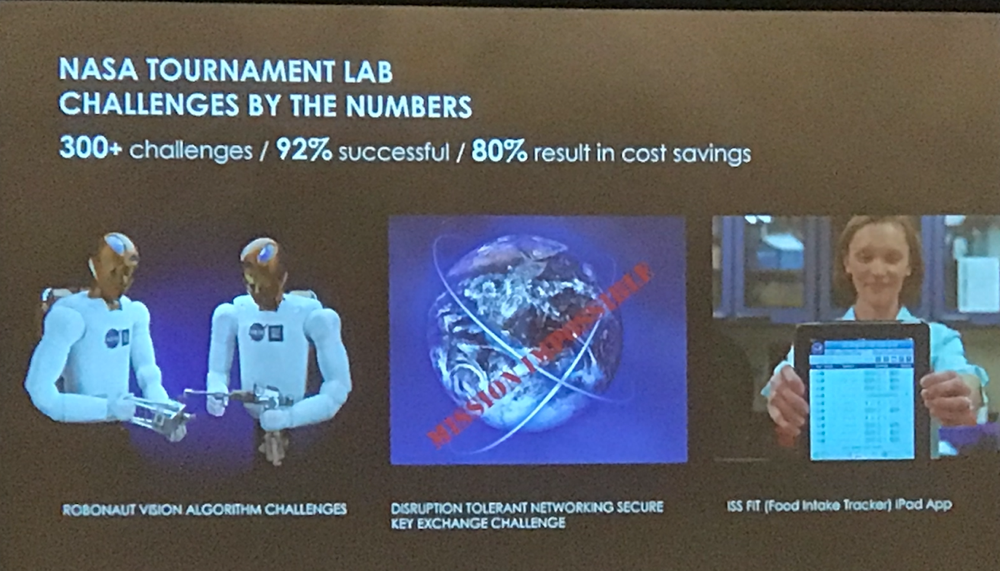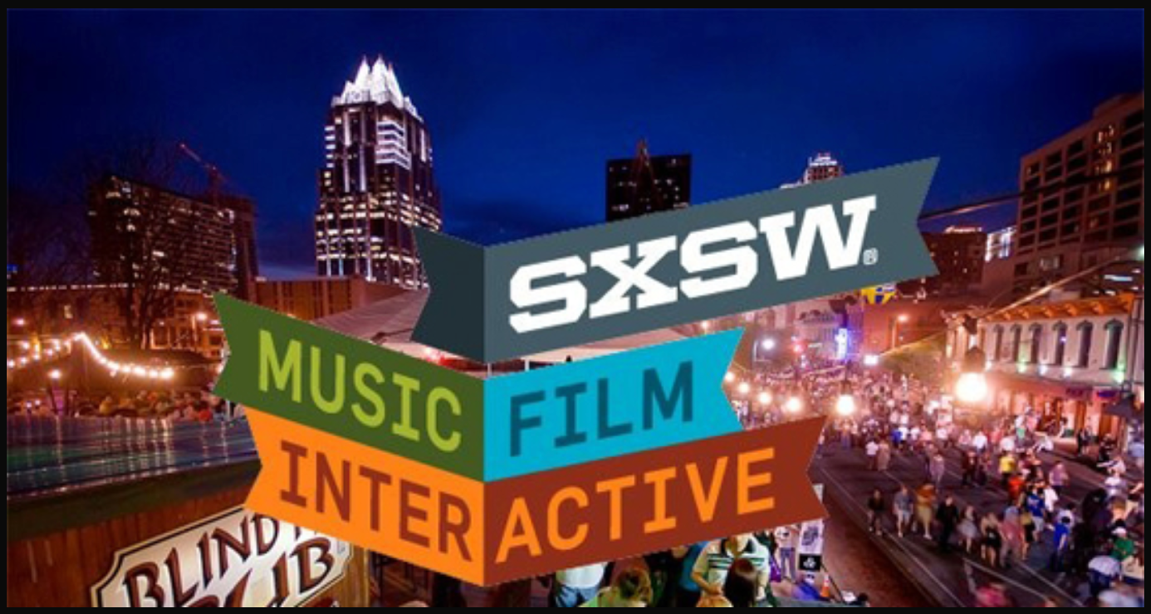Most people in Asia may be less familiar with SXSW (‘South by Southwest’, or colloquially referred to as ‘South By’), compared to the more well-known events such as Consumer Electronic Show CES, and Mobile World Congress MWC. Having attended both CES and MWC for several years in a row, I’m glad that I get to attend SXSW for the first time this year.
The 2018 SXSW ran from 3/9-18 in Austin, Texas. The week-long event is a collection of music, film festivals, and Interactive/Frontier Technologies sessions.
Different from CES and MWC, which are tradeshows in nature, SXSW provides a unique opportunity for creators and innovators to be under one roof, to discuss in-depth how technologies are being adopted in their industries, including film, music, multimedia, healthcare,..etc in different use cases.
In this article I provided a snapshot of SXSW, as well as highlights of the sessions I attended.
INTRO TO SXSW
The annual conglomerate of film, music, and interactive media began in 1987 in Austin, Texas, and has continued to grow in both scope and size every year. In the early days it’s mainly a music and film festival, which has now become a major venue for music and film releases, where leading producers, directors, actors/actresses alike often attend. The total attendees of SXSW also grew from approximately 700 back in 1987, to over 300,000 in 2017.
In more recent years SXSW Interactive, where frontier technologies are being showcased and discussed, is becoming a critical portion of SXSW. Looking at some of the past presenters/keynote speakers at SXSW from the tech industry, it’s apparent how SXSW earned its reputation as a breeding ground for new ideas and creative technologies:
SXSW past presenters:
2000 – Sean Parker, Napster
2004 – Jonathan Abrams, Friendster
2006 – Craig Newmark, Craigslist
2008 – Mark Zuckerberg, Facebook
2009 – Tony Hsieh, Zappos
2010 – Ev Williams, Twitter
2011 – Brian Chesky, Airbnb
2012 – Ben Silbermann, Pinterest
2013 – Elon Musk, SpaceX
The event also increasingly attracts high profile attendees, including the likes of President Obama in 2016, and Arnold Schwarzenegger, Melinda Gates, and Steven Spielberg in 2018.
Given the success of SXSW, there’s also a North by Northeast (NXNE) event, which takes place in Toronto, Canada being created, albeit much smaller in scale.
SESSION HIGHLIGHTS
Among the sessions I attended during SXSW, I can categorize them into 6 main topics which I find particularly stimulating:
1. The democratization, and new experiences to be unlocked with AI
2. ARVR in the filming and healthcare industries
3. Future of transportation
4. Blockchain and its application
5. How companies embrace open innovation, diversity, and build up brand image
6. Special Session: Baseball, Business & Redemption
Below I will share the highlight of each of these topics to hopefully give you a flavor of SXSW:
1. The democratization, and new experiences to be unlocked with AI
Designing the Next Wave of Natural Language and AI
At this exciting panel, representatives from Google, Microsoft, and Mercedes-Benz were assembled to discuss key factors to consider when a company develops its AI capability, as well as the challenges that even these tech giants face.
Speaking about the key factors companies should think about when developing AI-embedded solutions, and what affects the adoption and development of AI, the Product Lead of Google Home, Principal Program Manager of Microsoft AI Research, and Director of Machine Learning at Mercedes-Benz shared with the audience:
- Developing AI capability is a costly process, think about the exact scenarios to apply AI to, before investing the resources
- When developing Google Home, Google was mindful that when introducing new experience with AI, changes should be introduced gradually to people’s way of life, and experience needs to be seamless
- For Mercedes, a key goal for integrating AI is to enable more efficient use of driver’s time, hence the trust/relationship one has with their autonomous vehicle is critical
- Further on the trust issue of AI output, the use case really determines the tolerance of errors in output data. For example, when using AI for image analysis, to identify fashion merchandises online, versus to identify signatures in medical images for diagnostics, the tolerance for false positives would be very different.
And regarding the challenges faced by the tech giants themselves, and trends they see going forward, some of the points shared include:
- Challenges that even these large companies need to tackle when developing AI is still around data quality, the inclusion and discard of data. The panelists reiterated that in order to provide the right insights from AI, quality of training and hence output data is upmost essential
- Researches are also underway between the tech giants and academics to examine how to train AI with smaller data sets
- On the area of natural language processing, while there’s already ample applications using voice, there’s opportunities in the future for AI to be applied to gestures, facial expressions, etc to help users get a fuller context from AI
Democratizing AI for Individuals & Organizations
In this session, the audience got to hear from one of today’s most influential minds in AI – Dr. Fei Fei Li, the Chief Scientist of Google Cloud, Stanford CS professor and the Director of the university’s AI Lab, and Megan Smith, who had served as the U.S. CTO under President Barack Obama, previously an Executive at Google, and was a key figure behind initiatives to democratize science and technology education such as TechHire, Computer Science for All, and the Image of STEM campaign. She’s also an advocate behind many initiatives to promote diversity, such as the Malala Fund.
The discussion was around democratizing AI. As AI has enormous potential for improving the way of life, but to realize its full potential, the systematic barriers of entry must be fixed to engage a much broader, and diverse set of participants. The technology must be made available to the largest possible community of developers, entrepreneurs, users. To achieve this cause, Fei Fei and Megan advocated everyone has a seat at the table, and not just Silicon Valley tech giants, in addition, startups, educators, and Governments alike, need to all participate.
For Government, it can help influence curriculum development at schools and elsewhere, and enable people with appropriate skillsets to enter the workforce. For instance, the TechHire initiative Megan helped created under President Obama aims to expand local tech sectors by building pipelines of tech talents across the US, which now covers more than 70 communities.
In an effort to democratize especially AI, Dr. Fei Fei Li is working with Melinda Gates on a non-profit called AI4All. The organization supports educational programs designed to expose underrepresented high school students to AI.
All these efforts are aiming to make AI education and research more accessible, and appealing to a more diverse population.
The AI4All non-profit
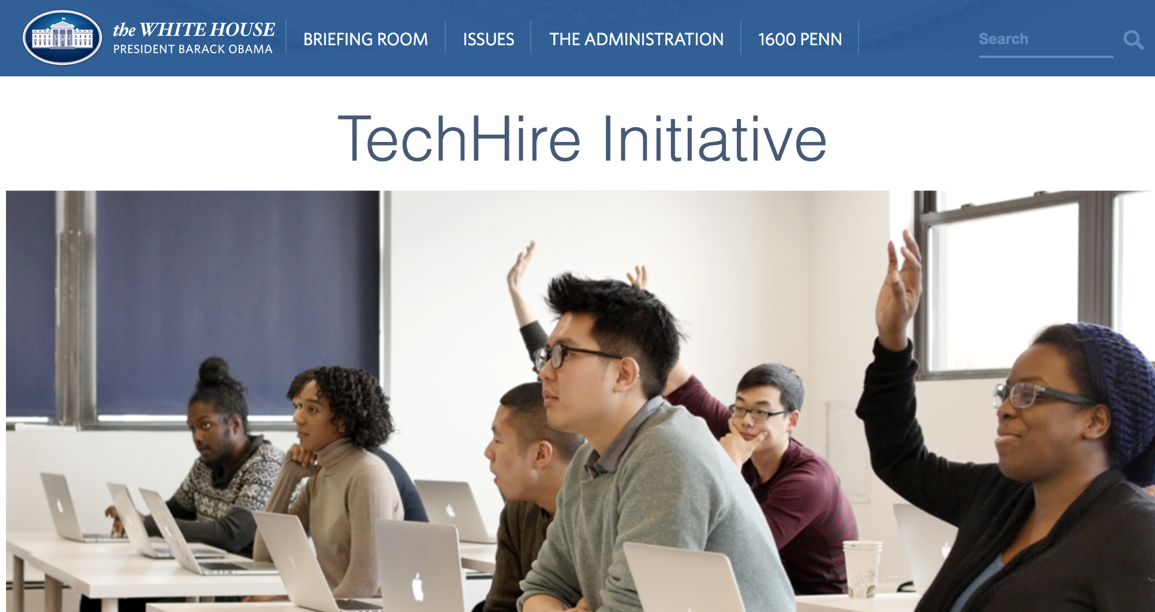
TechHire Initiative established during the Obama Administration
Why Machine Learning is the Next Frontier for Art
The session began by asking the question ‘can a machine determine the value of art?’ An example brought up was the auction of Leonardo da Vinci’s “Salvator Mundi” in 2017, for a whopping $450M, the most expensive artwork ever sold. But what determines that value? And if there’s a way for machines to make such a prediction?
This session was a great example of what one can expect at SXSW, a unique opportunity to be at the intersection of technology and media/art, and one of the most intriguing talks I attended at SXSW.
When exploring the boundary of AI’s capability, beyond something more specific such as road conditions, purchasing patterns, and health diagnostics,..etc, a question arises regarding can AI make judgements around beauty, taste, which is something so subjective?
The speaker Dr. Hugo Liu is the Chief Scientist of Artsy. An MIT Media Lab alumni, he is a pioneer in cutting-edge application of AI and consumer taste prediction.
Art collection is currently a $50B market, and Hugo argues that with now 850M visits a year to US museums, if it’s possible to just activate 5% of these visitors to become art collectors, with an average of $1,000 a person spending, it can add another $42.5B to art collection market (850M * 5% * $1,000). The question is with all the insights it may have, will machine be able to help objectively assign artworks a value, even to first time artist?
Hugo has been examining the possibility of creating a transparent, data-driven marketplace, or a ‘Zillow for art’. In this process, his team uses machines to analyze tens of thousands of artworks and previous transactions, and attempted to categorize the artworks based on an artist’s exhibition history, participating galleries and museums, and the history of the gallery/museum to predict winners, etc. In addition, upon analyzing some of the historic masterpieces, Hugo’s team attempted to use AI to look at the topic, composition, style, and color theme,..etc of these masterpieces, and correlate them with the cultural influence, and hence transaction value of the artworks. It’s still a project in the works, but continues to yield interesting insights.
Using machine to aid the categorization of artworks
A set of inputs to help train machines to predict the value of artworks
2. ARVR in the filming and healthcare industries
ARVR in Filming and Multimedia
This is one of the most popular topics at SXSW, where I attended several talks and demos. In the past year or so there’s doubt on whether ARVR reached the trough of the hype cycle, and whether it has its place in the market. During SXSW, it’s evident that not only it’s very much alive, the interests level and works gone into developing VR content continues to grow.
Recognizing the potential of ARVR in the film industry, film and TV production companies increasingly create ARVR experiences, in addition to the films themselves for audiences.
For instance, for the new Spiderman movie, Marvel created an app where people can take selfie with a character, explore Spiderman’s suit, and have interactions with the characters, etc. Similar apps are created for popular franchises such as Star Wars, and TV series Walking Dead.
For these long-time hits such as Spider-Man, Star Wars, as the fan base changing, production companies are conscious of it and hence hope to leverage new mediums such as ARVR to continue to engage existing audiences, and to attract new ones. For the purpose VR provides a good connection between traditional and immersive media.
For new animations such as Pixar’s recent hit Coco, the studio worked with Oculus to create a VR version of the movie.
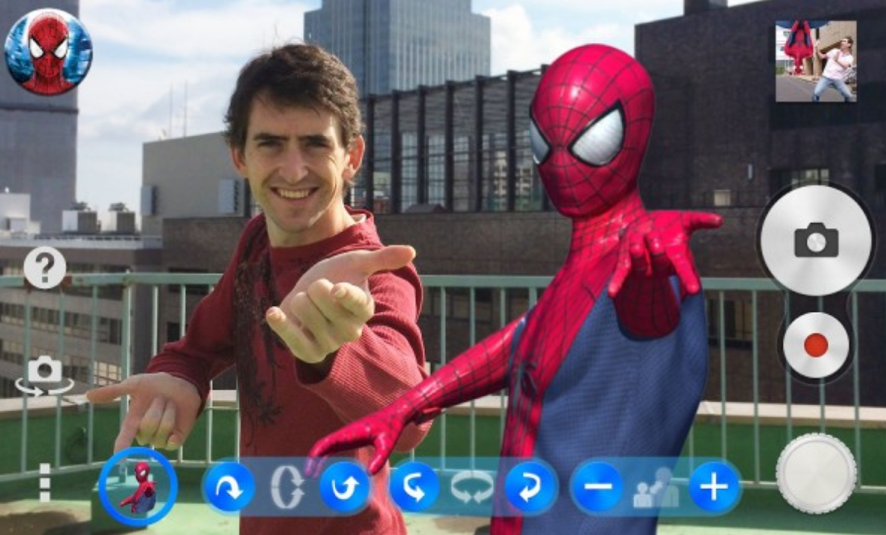
Snapshot of the Spiderman AR app
Looking at the future of ARVR, there’s still much room for content creators to develop more engaging contents. At SXSW, numerous films were showcasing their VR version, to give audience immersive experience of the films.
A variety of VR experiences for films at SXSW
Immersive Realities at the Frontier of Healthcare
This session discussed how ARVR is applied in a very different sector – healthcare. Two of the leading hospitals in the US - Cedars Sinai and Boston Children’s Hospital discussed how they are using ARVR to enhance patient experience.
Cedars Sinai using VR content developed by AppliedVR, to test how it helps alleviate pain from patients, sometimes terminally ill. The VR content, which were shown during SXSW, includes anything from an experience traveling to Iceland, to just soothing sceneries of waterfalls or rainforests. The patients participated in the trial reported that the VR experience really helped them relax and forget about the pain for the period of time.
Another similar program that Cedars Sinai is developing in collaboration with Samsung, Travelers insurance, etc, is to incorporate VR as a ‘digital pain reduction kit’, aiming to help patients reduce Opioid dependencies, which is now an epidemic in the US.
ARVR can also be a new and effective way for patients to receive, and understand medical data.
One example is Boston Children’s Hospital also working with AppliedVR to build a ‘virtual reality guide’ to help young children understand MRI procedure. In addition, the hospital is working with a startup - Klick Health from Canada to develop an app called Health Voyager, which takes in data from young patient’s endoscopy records, and transforms it into a virtual experience to help the patients understand their own body.
As both MRI and endoscopy can be traumatic experience, particularly for young children, the hospital found that with VR as an aide, it not only helped reduce anxiety for these patients, but also enabled them to better understand their own results.
AppliedVR’s solution has now been used by over 5000 patients at more than 180 healthcare sites. They’ve been proven useful in educating patients, and helping them developing coping skills and relaxation skills to relieve pain.
ARVR technologies truly open up new frontier in the healthcare sector. Besides the examples above, ARVR has also been tested on therapy for autism, stroke, and treatment of lazy eye, among others. Though when asked about challenges in adoption, the panelists mentioned is the difficulty to monitor how the solutions are being used once they are deployed into hospitals, as well as how to prove the economics to payers, and hospital administration.
3. Future of transportation
There were two interesting talks under this topic that I attended. One focused on innovations within the trucking industry, and the other on a more futuristic topic – air taxi.
Urban Air Taxi and the Future of Ridesharing
In this panel, EVP of Tech and Innovation of Bell Helicopter, Head of Product for Aviation of Uber, and CEO or GoFly Prize discussed their respective efforts to-date to develop urban air travel, to make it a reality and disrupt intra- and inter-city transportation.
Bell Helicopter showcased its air taxi prototype at SXSW, which is set to have its first test flight in northern Texas by 2020.
As for Uber, much work has already begun to make air taxi a reality. For instance, it already commenced dialogue and collaboration with NASA and FAA, examining topics around technology (e.g. what will be the battery reserve requirements for air taxi?), regulations (e.g. what airspace can be used in the future? How to evaluate air traffic density issues?), and much more. Initial testing for Uber air taxi will also likely be in Northern Texas, for which Uber is already working closely with Dallas-Fort Worth airport on planning.
To make air taxi a reality, there are still ample challenges ahead. Battery development is one of the main challenges, given the need for multiple vertical takeoff and landing in a day. Uber said that it recently hired battery experts from Tesla, and built a dedicated battery lab. Besides battery, the training and hiring of qualified pilots for these air taxi is another foreseeable challenges the panelists pointed out.
As for GoFly Prize, it’s a competition sponsored by Boeing to create future personal flying devices. According to the CEO, more than 110 universities are already participating in the competition, which no doubt will bring about innovative concepts to the industry.
Trucking Tech: Regulations, Ridesharing and Robotics
Trucking is a $100B industry, in recent years more and more innovations are disrupting this traditional industry.
For example, startup FR8Star created a platform to help matching supply and demand of trucking fleets, or as Fr8 puts it, a ‘Airbnb for trucking’.
It applies machine learning to help eliminate the manual works of matching, provide better price prediction, and solve mismatch between carriers and shippers. The company noted that in the future Blockchain is perfect application, though it doesn’t see adoption happen in a few years.
When asked about how long can we expect to see autonomous trucks, which are being tested by large players such as Waymo, and startups such as Embark, being widely available, the panelists conveyed that they are optimistic, however, change is a step function, and are not going to happen overnight. Current innovations around the trucking industry focus on ‘how to make truck drivers more productive’, and improve safety, as opposed to purely aiming at replacing drivers.
And before the society fully embraces autonomous trucks, some of the challenges ahead include a) infrastructure support: are highways well-designed to support autonomous trucks? E.g. are road shoulders wide enough to support emergency breaks? Are there sufficient sensors and cameras on the road for monitoring?; and b) society’s perception: will people be used to seeing and driving alongside trucks without drivers?
4. Blockchain and its application
The session I attended – Transforming Global Food Supply with Blockchain focus on a specific use case of Blockchain targeting the food industry. In this presentation, Brigid McDermott, VP of IBM Food Trust introduced IBM’s effort to leverage blockchain to provide better transparency and efficiency for the entire food supply chain.
IBM Food Trust™ is a collaborative network of growers, processors, wholesalers, distributors, manufacturers, retailers and others enhancing visibility and accountability in each step of the food supply. Powered by the IBM Blockchain Platform, IBM Food Trust directly connects participants through a permissioned, permanent and shared record of food origin details, processing data, shipping details and more.
During the talk Brigid gave an example that Walmart, one of the first collaborators of IBM Food Trust, tested their food tracing system prior to using blockchain. Back then in order to trace the origin of a bag of mangos, it took them 6 days 18 hrs, and after blockchain is integrated, it took them a mere 2.2 sec.
The benefits of using blockchain to manage food supply is several fold, especially when there’s issues
Sample view of the IBM Food Trust food tracking dashboard
with a particular type of food, besides the ease of tracking food source, it allows only the questionable food items to be identified and brought off the shelf, as opposed to a massive destroy which is the case today, and greatly reduce waste.
At the moment several major food companies and supermarkets are already onboard with IBM Food Trust, including Walmart, Kroger, Dole, Tyson,..etc.
I do believe that this is one of the most compelling use cases of Blockchain so far, given the real and growing need for such a solution to govern food safety around the world.
5. How companies embrace open innovation, diversity, and build up brand image
Around the topic of open innovation, diversity and brand image, two of the panels particularly resonated with me.
Break & Re-Make Your Brand with Uber
In this session, correspondent from NBC News interviewed Bozoma Saint John, the very first Chief Brand Officer of Uber. As opposed to topics around autonomous driving or the shared economy from Uber people get to hear in other conferences, this was a rare opportunity to hear about how the issue of brand imaging being addressed at Uber.
Bozoma was hired into Uber at a very challenging time for Uber, when it was embattled with its previous CEO Travis Kalanick’s negative PR, and a slur of allegations around sexual harassments and lack of diversity internally. Bozoma is leveraging her previous experience as Marketing executives at large brands including PepsiCo and Apple Music to help tackle Uber’s culture, diversity, and brand image issues head on.
At the moment when diversity is a such a crucial topic in Silicon Valley, and throughout US, Bozoma is striving to move the diversity and inclusion conversation forward, and project it onto the Uber brand. As (still) a minority woman at Uber’s C-suite, she wants to foster more conversations on the topic not only within Uber, but to incentivize industry-wide changes.
And to better understand the struggles faced by the company and its drivers, Bozoma, as a C-suite executive, drives Uber Pool herself in her downtime to get first-hand insights.
How NASA and LEGO Embrace Open Innovation
In this talk SXSW put two unlikely corporation/institution together on the same stage – LEGO and NASA, to talk about open innovation initiatives within their organizations.
LEGO: As a brand historically been associated with creativity and innovation, LEGO has been broadening its innovation efforts by partnering with the likes of MIT for their Mindstorm product line.
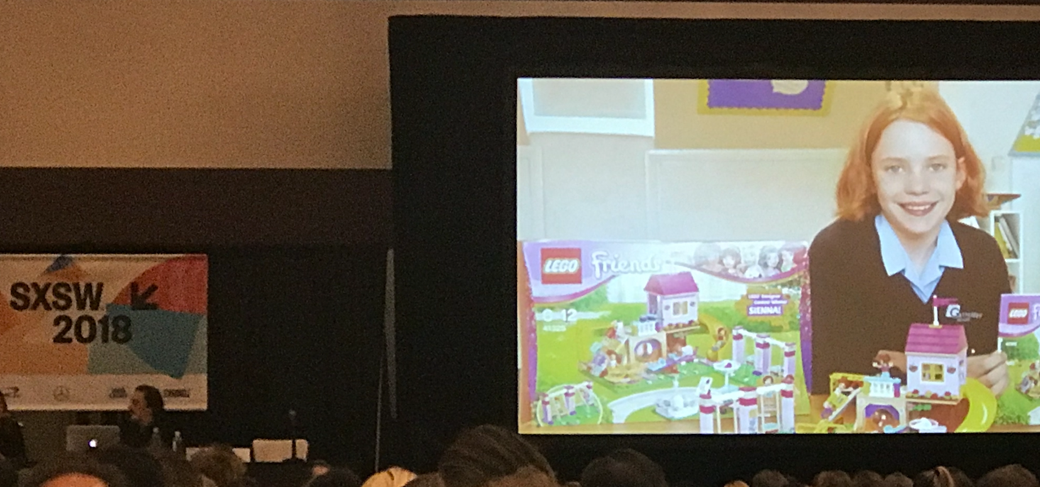
And now to embrace open innovation, according to LEGO’s VP of Marketing, they created competitions for children/adults to submit designs, which may ultimately turn into an actual LEGO product. For example, one of the designs submitted by a girl in the UK, inspired by her own backyard, was the winner of the competition and now turned into a real product in the LEGO Friends series.
NASA: As the leading innovator in aerospace, which has top notch scientists and engineers in the field, people are curious on why NASA still embraces open innovation. According to the Director of NASA’s Center of Excellence for Collaborative Innovation, there were times where solutions to certain problems that NASA are trying to tackle actually originated from outside of the organization. NASA is endeavored to democratize tech innovation, and nurture the next generation scientists and engineers, with STEM-focused program such as ‘future engineers’ challenges and NASA tournament lab.
6. Special Session: Baseball, Business & Redemption
In this exciting session, the Chairman of CNBC – Mark Hoffman interviewed former New York Yankee’s Alex Rodriguez (‘A-Rod’), one of the most well-known professional baseball players in US history, where he reflected on his storied career, and how he leveraged what he learned throughout the highs and lows of his career to build up his own business, and mentor the next generation of sports stars.
After a long and successful (though not without its lows) career in baseball, Alex established A-Rod Corp, his company that’s engaged in a range of investments in real estate, health and wellness, and media entertainment. Examples of his investments include Snapchat, Oscar, and Trufusion, a workout studio franchise, to help it promote the brand and expand in the US. It currently plans to enter China as well. Also in his portfolio is NRG eSports, a millennial-focused content network, providing exclusive, multi-platform programming for gamers. eSports is an area Alex sees great market potential and is actively promoting.
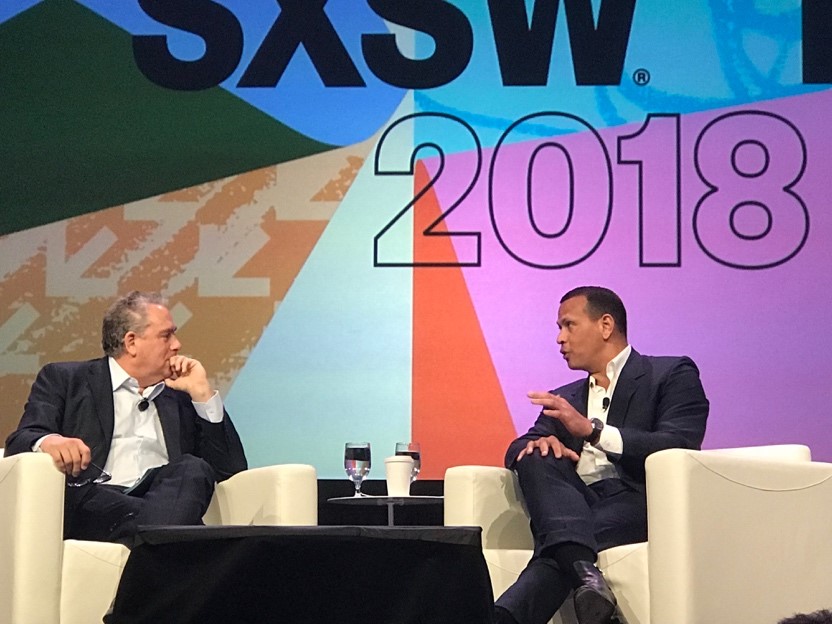
Beyond investment, A-Rod also involved in a range of philanthropic causes, including Project Destined. The mission of Project Destined is to transform minority youth into owners and stakeholders in the communities in which they live, work and play. With the careful guidance of its leadership team, Project Destined aims to produce the largest number of minority owners of real estate under the age of 18 in the US.
When asked about his own hiring philosophy, A rod said that he’s generally looking for ‘ph.D’, though his ph.D stands for ‘Poor, Hungry, Driven’. This reflect his own upbringing, when he didn’t have all the resources, but always worked hard and strived for greater achievements.
Above are highlights from my first SXSW attendance. It was a truly unique and inspiring learning experience, and I do hope that more of you will have an opportunity to be part of this one of a kind event.
